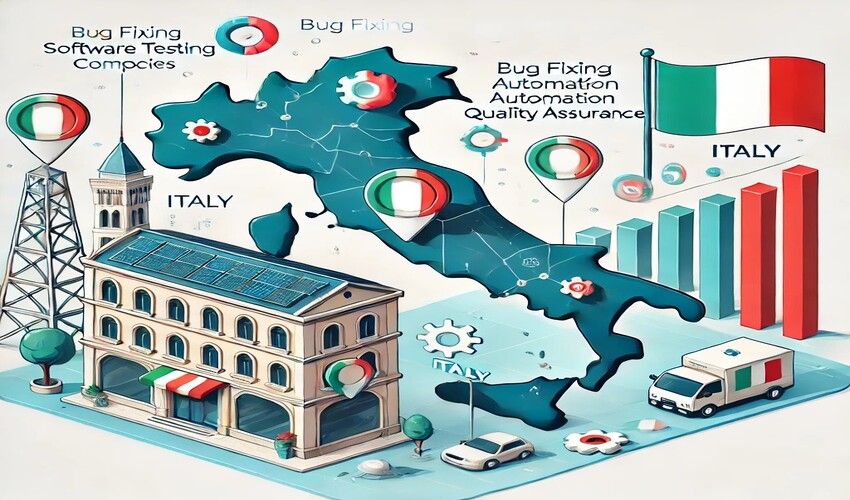Last updated on May 13th, 2024 at 11:01 am
In today’s fast-paced digital world, software development is constantly evolving to meet the demands of modern businesses. One approach among software development methodologies that has gained popularity in recent years is Agile software development. However, as technology advances rapidly, the traditional Agile methodology is also evolving to adapt to the changing landscape. This is where Adaptive Software Development comes into play, offering a more flexible and responsive approach to software development.
In this article, We will look at the basic stages of adaptive software development and explore how this modern approach refines and extends traditional agile methodologies.
Adaptive Software Development
Adaptive Software Development is an agile and incremental approach to software development that emphasises flexibility, collaboration and sustained improvement. ASD is designed to adapt to changing requirements and environments, unlike traditional agile methodologies, which adhere to a defined set of rules and procedures. This will enable development teams to react rapidly to criticism, prioritize features based on business value, and deliver quality software promptly.
The Creation of Adaptive Software Development
In response to the limitations of traditional project planning in a high-change environment, ASD was envisaged. Initially coined by Jim Highsmith in the late 1990s, ASD was designed to support complex projects where requirements are not fully known in advance and are likely to evolve during development. Three main phases form the basis for this framework: Speculate, Collaborate, and Learn.
Stages of Adaptive Software Development
Speculate
- Iterative Planning
Unlike traditional models that rely on extensive upfront planning, ASD promotes iterative planning. To that end, broad objectives are set and continuously adapted through continuous learning and feedback. It allows for the flexibility and responsiveness of development teams to changes rather than strictly adhering to a prior set of standards.
- Proactive risk management
Precipitative risk management is also a part of ASD speculation. To mitigate these risks effectively, teams are encouraged to identify potential risks early in the development process and to speculate on various scenarios. This approach ensures the project can cope with unexpected challenges without major difficulties.
- VisionDriven Development
A clear vision of the final product guides the speculative phase, but a path to achieving that vision is complex. This principle aims to align the team’s efforts with the project’s overall objectives and the stakeholders’ expectations, ensuring that all members move in a coherent and strategic direction.
Collaborate
- Team empowerment
Collaboration in the field of Autism Spectrum Disorders is not just about working with each other, and it’s also about making sure that all teams are empowered. ASD uses a variety of perspectives to increase creativity and innovation through the promotion of an environment where every member can voice their opinions and be involved in contributing ideas.
- Stakeholder engagement
Regularly and systematically interacting with all stakeholders is essential, including clients, end users, and staff members. This ongoing engagement helps ensure the development process aligns with real-world needs and expectations and facilitates immediate feedback and incrementalisation.
- CrossFunctional Teams
ASD promotes cross-functional teams where members possess various skills in different fields of expertise. This arrangement makes it easier for the team to deal with complex issues more comprehensively, ensuring that different aspects of the project are considered and integrated without delay.
Learn
- Feedback Integration
Learning in ASD is driven by continuous team and external stakeholders’ feedback. Such feedback shall be systematically incorporated into the development process to improve and refine the product.
- Knowledge sharing
Regular dissemination of knowledge acquired throughout the project is emphasized. ASD promotes a culture of learning that benefits existing and future projects by documenting knowledge and sharing it with all stakeholders.
- Adaptive adjustments
beyond correcting mistakes, the principle of learning also applies. It involves considering what has been learned to adjust the project’s direction strategically. To meet user needs and market conditions, it may include revising aspects of product features or even changing the scope of a project.
The Five Key Roles of Adaptive Software Development in the Agile World
1. Flexibility
One of the key roles of Adaptive Software Development in the Agile world is its focus on flexibility. By allowing for changes to be made quickly and easily, ASD enables teams to respond to customer feedback and evolving requirements. This flexibility is crucial in today’s fast-paced business environment, where market conditions can change rapidly.
2. Iterative Development
Another important role of ASD in the Agile world is its emphasis on iterative development. Instead of trying to deliver a fully-featured product all at once, ASD breaks down development into smaller, more manageable iterations. This approach allows for continuous improvement and ensures that the final product meets the needs of the end-users.
3. Collaboration
Collaboration is key in Agile software development, and ASD is vital in fostering collaboration among team members. By encouraging open communication and shared decision-making, ASD helps teams work together more effectively and produce better results. This collaborative approach leads to higher-quality software products that are more likely to meet customer needs.
4. Continuous Improvement
Adaptive Software Development emphasizes the importance of continuous improvement. By continually seeking feedback, evaluating processes, and making adjustments as needed, ASD helps teams deliver better software products. This commitment to ongoing improvement is essential in today’s competitive market, where companies must constantly innovate.
5. Customer Focus
Finally, Adaptive Software Development places a strong emphasis on customer focus. By involving customers in the development process, soliciting their feedback, and incorporating their suggestions, ASD ensures that the final product meets customer needs and expectations. This customer-centric approach leads to higher satisfaction levels and more successful software projects.
Differences between traditional agile software development and adaptive software development
The key difference between Agile and Adaptive Software Development is their approach to change, although they share several core principles. Traditional agile methods, such as Scrum and Kanban, are based on principles and practices that govern the development process. On the other hand, ASD embraces change as a natural part of the software development life cycle. This will allow the teams to constantly adjust and improve their processes according to changes in requirements and feedback.
Some differences in different terms are listed here:
| Terms | Agile software development | Adaptive software development |
| Flexibility vs. Rigidity | Agile software development is known for its flexibility, allowing for changes throughout development. | Adaptive software development is more rigid, focusing on a predefined plan. |
| Emphasis on Collaboration | Agile strongly emphasizes collaboration between team members | Adaptive focuses more on individual responsibility. |
| Iterative vs. Incremental | The agile approach is an iterative process, with each incremental step continuing the previous one. | Adaptive takes the incremental approach and adds new features at a small rate. |
| Customer Involvement | The agile approach involves customers throughout the development process | , while the adaptive approach may involve less direct customer involvement. |
| Predictive vs. Reactive: | Agile is more predictive, with a clear roadmap and timeline | Adaptives are more reactive, adapting to changes as they develop. |
| Scope Management | Through continuous feedback and evolution, agile aims to manage the scope. | Adaptive controls scope by providing minimum viability products and filtering from there. |
| Change Management | Agile is willing to embrace changes and see them as opportunities for improvement. Bundt Cakes | Adaptive may have trouble adapting to change since it can interfere with the established plan. |
| Communication | Agile high-value communication, with daily stand-up meetings and constant collaboration. | As the team members have to work independently, adaptive may be less frequently communicated. |
| Risk Management | Agile addresses risks throughout the development cycle using risk analysis and mitigation techniques. | The adaptive risk management process may not be as structured. |
| Goal Setting | Agile sets clear goals and objectives for each iteration, measuring progress against these goals. | Adaptives might have more flexible objectives and adjust them if necessary. |
| TestingTeam | Agile incorporates testing in the entire development process, focusing on automated testing and continuity of integration. | Adaptive, especially at the early stages of development, may be less focused on testing. |
| structure | agile teams are multi-functional and consist of members from various disciplines working together. | Adaptive teams may be more segregated, where team members work independently on their assigned tasks. |
| Feedback | Agile values feedback from both team members and customers, using it to drive continuous improvement. | There may be less frequent feedback loops in adaptive systems, leading to slower feedback cycles. |
| Decision Making | Agile encourages team members to make decisions collectively using techniques such as the “Fist of Five” method. | Adaptive can rely more on project managers and team leaders to make decisions. |
| Transparency | With open communication and visibility in the development process, agile encourages transparency. | With team members working separately, adaptive may have difficulty being transparent. |
| Planning | Agile uses sprint planning and backlog grooming techniques to plan for future work. | Adaptive may have a less structured planning process, adjusting plans as appropriate. |
| Adaptability | Agile is designed to be flexible, with the ability to respond quickly to changes in requirements or priorities. | Adaptation may be difficult, as changes can disrupt the established plan. |
| Documentation | Agile emphasizes working software over comprehensive documentation, focusing on delivering value to customers. | More documentation may be needed to adapt, particularly in the regulatory sector. |
| . Customer Satisfaction | Agile focuses on delivering value to customers through incremental improvements and feedback-driven development. | Adaptive may prioritize meeting predefined milestones over customer satisfaction. |
| Continuous Improvement | Agile promotes a culture of continuous improvement, with retrospectives and feedback loops to drive process improvement. | Adaptive may not have as structured of a process for continuous improvement. |
The role of the leader in the development of adaptive software
A key leadership role is to foster a culture of openness, cooperation, and constant improvement across the Adaptive Software Development process. Leaders must be willing to give their teams greater autonomy, promote experimentation, and help them take risks. Leaders can help teams cope with change, manage challenges, and achieve their objectives by creating a safe and equitable environment.
Conclusion
The future of Agile lies in adaptive software development as technology advances and companies are increasingly under pressure to deliver software faster and more effectively. Organizations can keep pace with the changing landscape and provide quality software that satisfies their customers’ needs by supporting change, collaboration, and continuous improvement.

















Leave a Reply